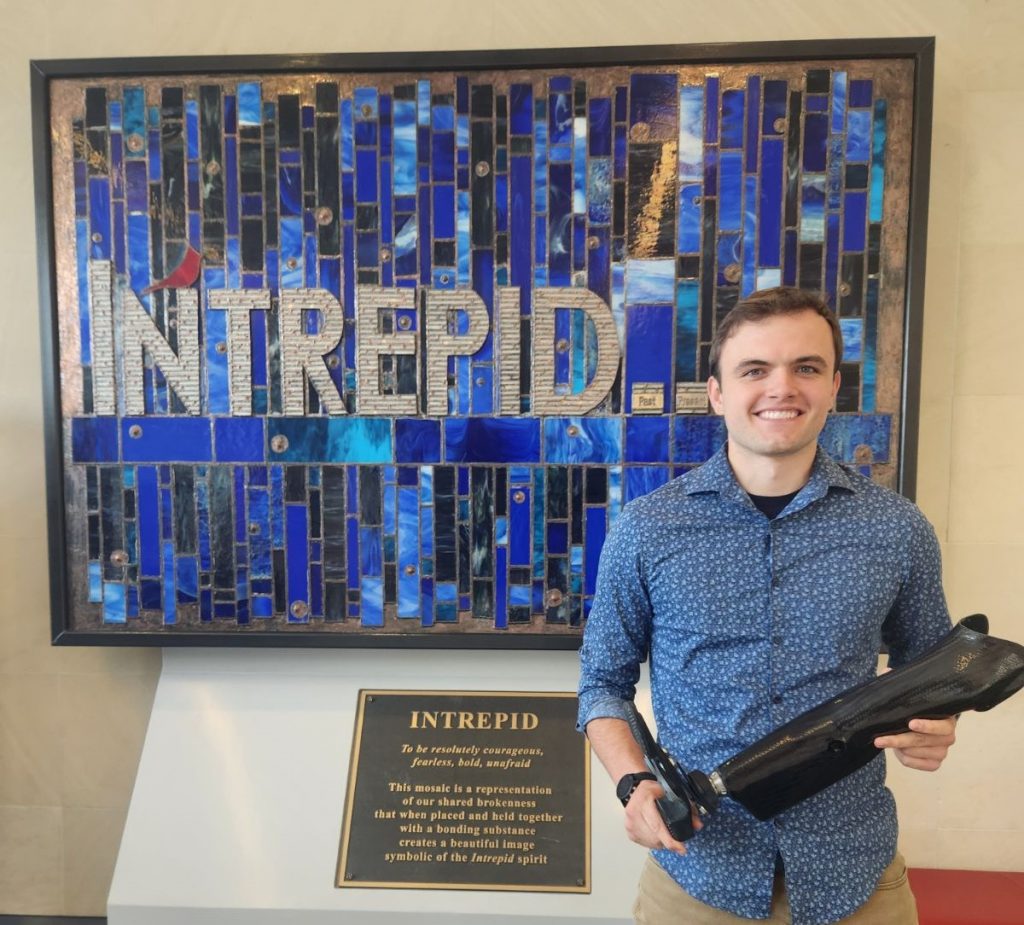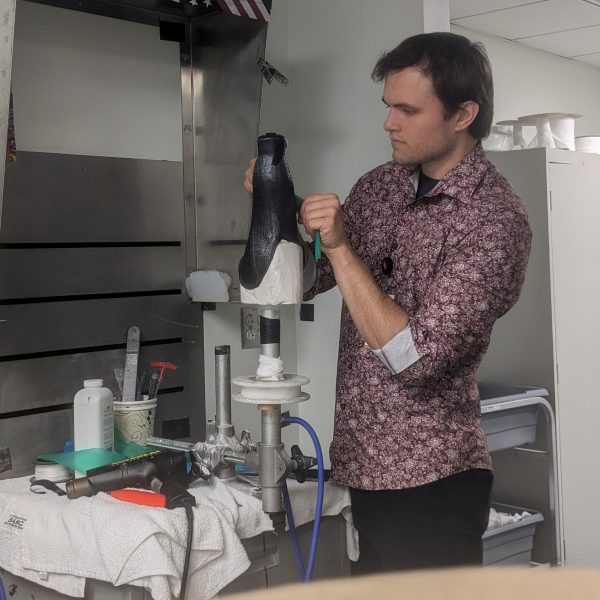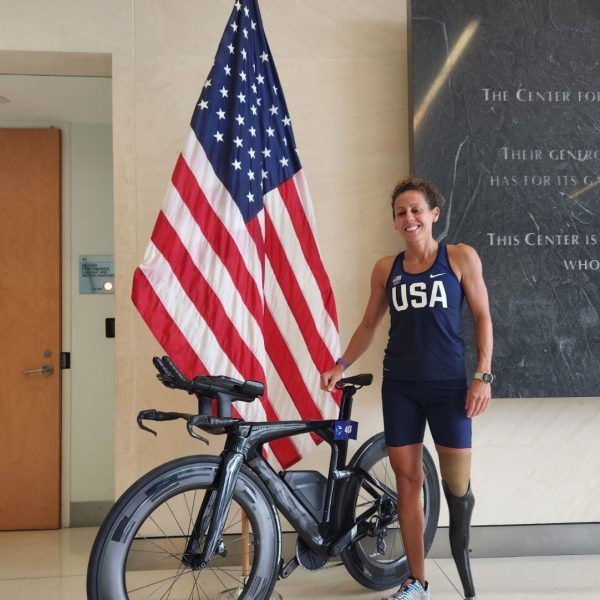
Paul Slaughter knew early on he wanted an engineering degree that would help amputees, even writing in a high school career essay about designing prosthetics to assist athletes.
The Vanderbilt Mechanical Engineering graduate student recently got that opportunity when he designed a prosthetic leg for Army veteran Kelly Elmlinger to compete in triathlons. This has so far included a World Triathlon Para Series event where Elmlinger used the leg to help come in first place.

“The impact of research can often be years away, but this project was an exciting exception,” said Slaughter, who plans to complete his doctorate this winter. “It’s incredible to see this prosthetic make an immediate impact.”
Slaughter worked on the prosthetic during a five-month fellowship earlier this year at the Center for the Intrepid rehabilitation center, part of the Brooke Army Medical Center, in San Antonio, Texas. He led a team of prosthetists, technicians, and other scientists in designing a prosthetic leg for an athlete with below-knee amputation.
In developing the prosthetic, Slaughter said he used biomechanical data collections and an instrumented bike to measure how much force was being put onto each pedal.
“Using these data, I designed her prosthesis to maximize the power output of each pedal stroke,” he said. “I then used computer simulations, 3D printing, and carbon fiber to fabricate the final leg to be lightweight and aerodynamic.”
There’s a general need for engineering research in the areas of prosthetics and orthotics. In the United States, about 110,000 people experience some level of major lower limb amputation each year, according to the National Institutes of Health (NIH). And the World Health Organization (WHO) reports that 30 million people worldwide need prosthetic and orthotic devices, but more than 75% of developing countries don’t have training programs for prosthetics and orthotics.
“This project was a unique balance of two things I enjoy: designing devices and working with people,” said Slaughter, who received a prestigious Graduate Research Fellowship from the National Science Foundation in 2020. “I plan to continue making an impact with this type of research.”

Slaughter received his undergraduate degree in mechanical engineering from the University of Wisconsin-Madison. He currently works with School of Engineering faculty member, Karl Zelik, in the Center for Rehabilitation Engineering and Assistive Technology, which focuses on improving health, mobility, and independence for individuals with physical disabilities and enhancing human performance and well-being through advances in movement science and assistive technology like prostheses and exoskeletons.
Zelik, associate professor of mechanical and biomedical engineering and physical medicine and rehabilitation, said he’s proud of Slaughter’s accomplishments and appreciates the graduate student’s love for what he does.
“Paul shares my fascination with musculoskeletal biomechanics and trying to understand how humans move and why we move the way that we do,” Zelik said. “Once we glean those insights, we’re able to apply them to help people with disabilities or to engineer solutions that prevent people from breaking down so they can live life to the fullest.”
Contact: Lucas Johnson, lucas.l.johnson@vanderbilt.edu